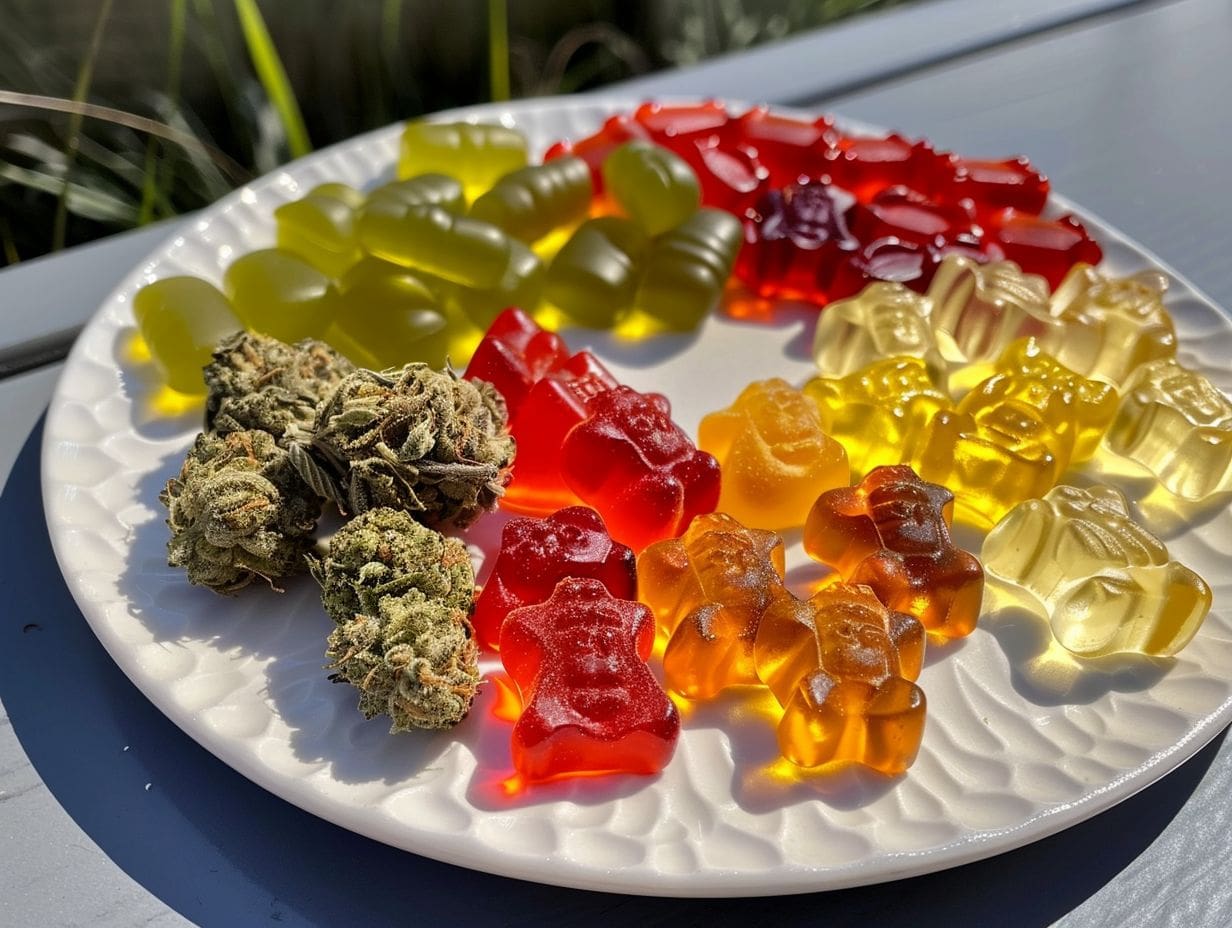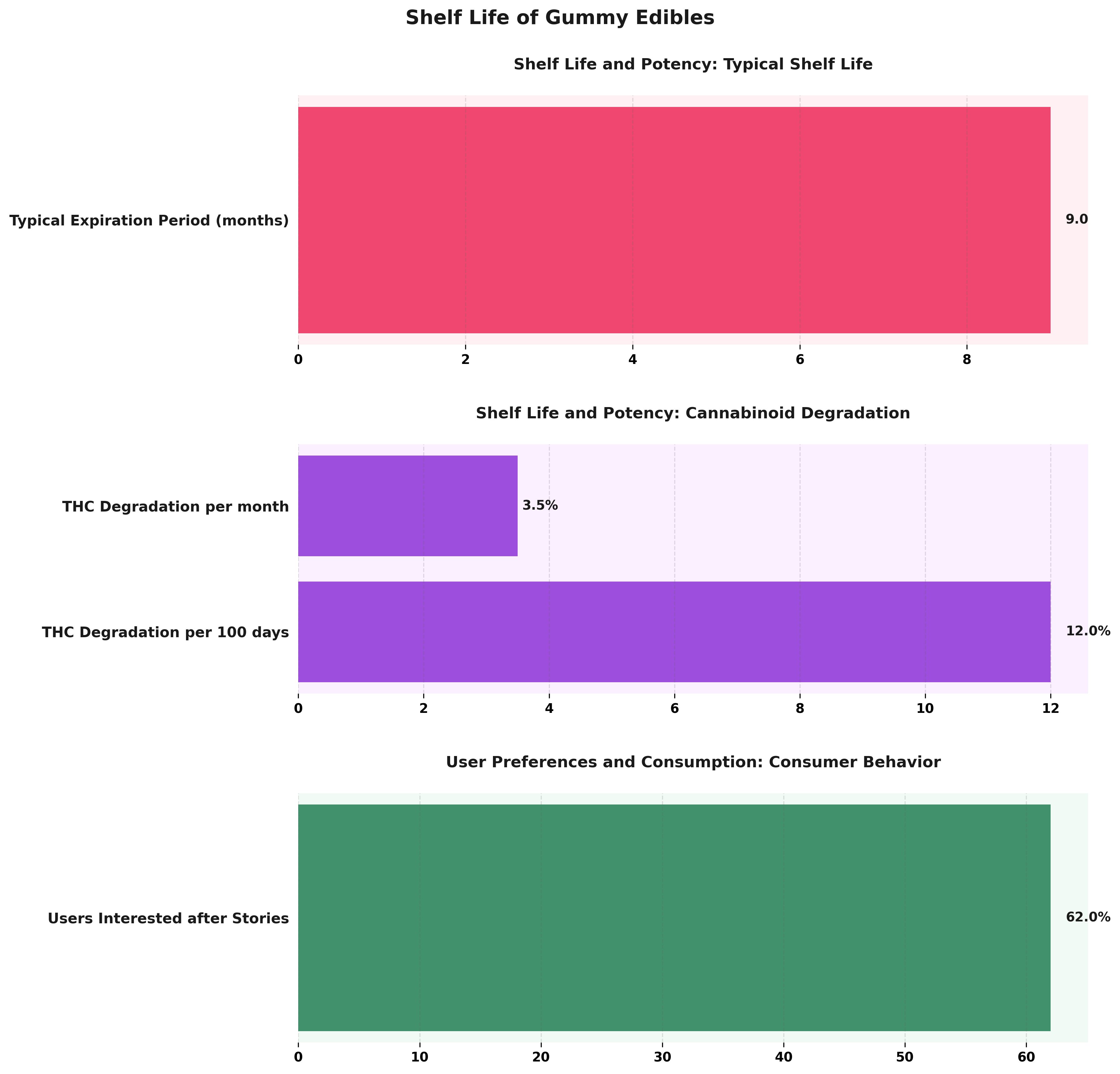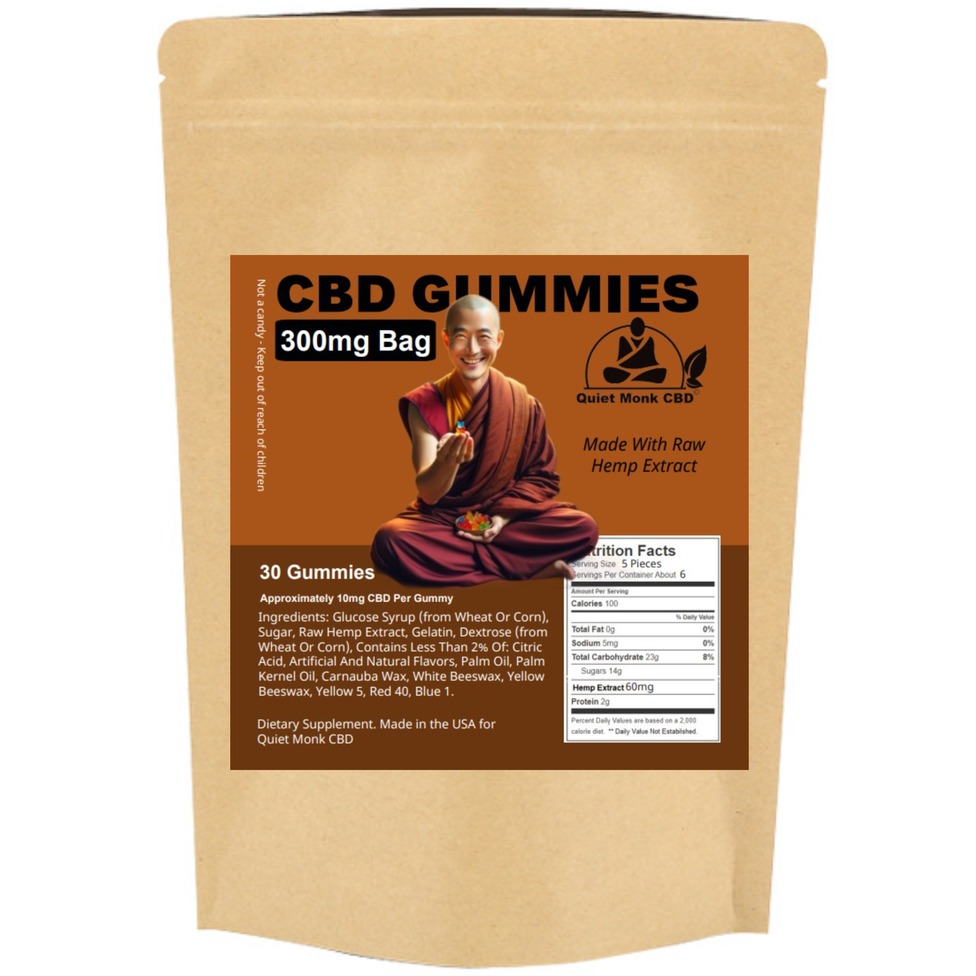
Expiration dates can often be a source of confusion, particularly when it pertains to edible gummies. For enthusiasts of these confections, it is crucial to understand their shelf life in order to enjoy them safely and at their optimal quality. This article aims to clarify the meaning of expiration dates, examine the factors that affect the longevity of gummies, and identify the signs that indicate they may have deteriorated. Additionally, this article will provide recommendations on proper storage and handling techniques to help maximize freshness. Continue reading to ensure that your gummies remain a pleasurable treat.
Key Takeaways:
1. Understanding expiration dates for edible gummies is important in determining their safety and potency.
2. On average, edible gummies can last up to one year if stored properly, with factors such as type and ingredients affecting their shelf life.
3. Signs that your edible gummies have expired include changes in appearance, texture, and smell. It is best to dispose of them if they have passed their expiration date.
Understanding Expiration Dates for Edible Gummies
Understanding the expiration dates for edible gummies, particularly those infused with THC or CBD, is crucial for consumers seeking to enjoy cannabis edibles in a safe and effective manner.
These expiration dates signify the timeframe during which the product retains its potency and quality. This period is generally determined by the production date and is influenced by several factors, including storage conditions, packaging methods, and the intrinsic characteristics of the ingredients utilized.
Certain perishable ingredients may pose health risks if consumed beyond their designated expiration dates.
What Do Expiration Dates Mean?
Expiration dates on products such as gummy edibles indicate the final date by which the manufacturer guarantees the product’s effectiveness and safety for consumption. This aspect is particularly crucial for cannabis edibles, as there is potential for potency loss and cannabinoid degradation over time.
These dates serve as essential guidelines for consumers, ensuring that they enjoy these products while they are at their optimal quality. The shelf life of edibles can vary significantly, influenced by factors such as storage conditions, exposure to light, humidity, and the presence of preservatives. Failure to adhere to these guidelines may pose considerable health risks.
As time progresses, the degradation of cannabinoids may occur, resulting in not only reduced psychoactive effects but also alterations to the overall experience. Therefore, maintaining awareness of expiration dates is vital for consumers to avoid the consumption of products that may be less effective or even potentially harmful.
Factors That Affect Shelf Life
Several factors can significantly influence the shelf life of edible gummies, including storage conditions, environmental factors such as temperature and humidity, the type of perishable ingredients utilized, and adherence to packaging labels that provide guidance on maintaining product quality.
To ensure the longevity of these cannabis-infused treats, it is essential to store them in a cool, dark place, as this practice helps prevent the degradation of both flavor and potency. Additionally, the use of airtight containers is critical, as they minimize exposure to moisture and air, which can lead to mold growth and a deterioration of texture.
The ingredients themselves are also paramount in determining the shelf life of the gummies; those that contain natural preservatives generally exhibit longer shelf lives compared to those made with fresh fruit extracts.
It is imperative to pay close attention to the product packaging, as it often contains specific instructions that can optimize the freshness and safety of cannabis products, thereby ensuring that users can enjoy their edibles for an extended period.
Shelf Life of Gummy Edibles

The data on the Shelf Life of Gummy Edibles provides insights into both the longevity and potency of these products, as well as consumer interest driven by narratives around the product. Understanding the typical shelf life and potency degradation is essential for manufacturers and consumers to ensure the effectiveness and safety of gummy edibles over time.
Shelf Life and Potency metrics indicate that gummy edibles typically have an expiration period of 9 months. This suggests that while these products are relatively stable, consumers and retailers should be mindful of the expiration date to maintain optimal quality and effectiveness. The stability of the product is a critical factor influencing consumer trust and satisfaction.
Cannabinoid degradation is another crucial factor, specifically THC, which is a common active ingredient in many gummy edibles. The data shows that THC experiences a degradation rate of 12% every 100 days, or approximately 3.5% per month. This degradation can affect the potency and expected effects of the edibles over time. Manufacturers must consider this when determining production and distribution timelines to ensure that consumers receive a product that meets their potency expectations.
User Preferences and Consumption data reveal interesting insights into consumer behavior. A significant portion of users, 62%, express interest in gummy edibles after hearing or reading stories about them. This suggests that storytelling and personal experiences play an influential role in consumer decisions. Brands can leverage this by sharing user testimonials and creating engaging narratives around their products to boost interest and sales.
In summary, the data emphasizes the importance of understanding shelf life and potency changes in gummy edibles while highlighting the role of effective storytelling in influencing consumer behavior. For businesses in this sector, focusing on product stability and enhancing marketing strategies through storytelling could be key to sustaining growth and customer satisfaction.
How Long Do Edible Gummies Typically Last?
The typical expiration period for edible gummies, including both THC gummies and CBD edibles, can vary significantly; however, most cannabis edibles generally possess a shelf life ranging from several months to one year when stored appropriately.
This allows consumers to enjoy their preferred edible gummies without the concern of immediate spoilage.
Average Shelf Life for Different Types of Gummies
The average shelf life of various types of gummy edibles can differ significantly. THC gummies generally have a shelf life ranging from six months to one year, while CBD edibles may possess a similar or slightly extended shelf life, contingent upon their ingredients and storage methods.
Several factors, including the specific production date, storage conditions, and overall ingredient composition, play essential roles in determining how long these products can retain their potency and flavor.
For example, gummies that are infused with natural fruit juices may exhibit shorter shelf lives due to the lack of preservatives, whereas those manufactured with artificial flavors are likely to last longer. Additionally, it is important to note that gummies typically feature expiration dates printed on their packaging; THC-infused varieties may expire after eight to twelve months, while some CBD edibles can remain viable for up to eighteen months.
To ensure optimal longevity, it is recommended to store these products in a cool, dry location, away from direct sunlight.
Signs that Your Edible Gummies Have Expired
It is essential to recognize the indicators that indicate the expiration of edible gummies to mitigate potential health risks, including food poisoning.
Such risks may result from the deterioration of ingredients and the loss of potency that occurs over time.
Visual and Sensory Indicators
Visual and sensory indicators of expired edible gummies include observable changes in appearance, such as discoloration and the presence of an unpleasant odor, as well as a noticeable reduction in potency that may compromise the quality and safety of the product.
These changes often manifest as a sticky texture and an unusual sheen on the surface, which signal the commencement of spoilage and render the gummies less appealing. Consumers may also detect a chalky or grainy texture when handling or consuming these products, which can result from crystallization or the separation of ingredients.
Such alterations not only diminish the enjoyment of the gummies but also raise concerns regarding their safety for consumption, as mold growth or the degradation of ingredients may pose gastrointestinal risks.
The loss of potency signifies that users may not experience the intended effects, which can be particularly frustrating for those who rely on the gummies for medicinal purposes.
How to Properly Store Edible Gummies
Proper storage of edible gummies is crucial for preserving their quality and extending their shelf life. This involves adhering to specific storage guidelines, such as maintaining a cool, dark environment, utilizing airtight containers, or employing vacuum-sealed packaging to minimize exposure to environmental factors.
Best Practices for Extending Shelf Life
To effectively extend the shelf life of edible gummies, it is essential to adhere to best practices, which include utilizing airtight containers, storing the product in a cool, dark location, and being mindful of factors that may compromise quality preservation.
Consumers should ensure that their hands are clean and dry when handling the gummies to minimize the risk of moisture transfer. Incorporating desiccant packets within the containers can assist in absorbing any excess humidity, which is critical in preventing mold and deterioration.
Additionally, it is advisable to avoid exposing the gummies to direct sunlight, as ultraviolet rays can degrade their potency and flavor. By routinely inspecting for signs of spoilage, such as unusual texture or odor, individuals can take appropriate measures to maintain the integrity of their products.
Furthermore, proper organization and labeling of storage containers can enhance the ability to keep track of freshness dates.
Tips for Maximizing the Freshness of Your Gummies
Maximizing the freshness of gummies requires the implementation of several key strategies for proper handling and consumption, as well as adherence to specific storage guidelines for edibles. These practices are essential to maintain the quality of the gummies for an extended period.
Proper Handling and Consumption
Proper handling and consumption of edible gummies are essential not only for preserving their quality but also for ensuring dosage awareness. This awareness enables consumers to effectively enjoy the health benefits associated with THC and CBD.
To achieve optimal preservation, it is advisable to store these edible products in a cool, dry place, preferably in airtight containers. This practice helps prevent moisture and light exposure, both of which can degrade their potency.
Understanding the recommended serving size is of utmost importance. New users should begin with a low dose and allow sufficient time for the effects to manifest before considering the consumption of an additional gummy. The delayed onset of effects may lead to unintentional overconsumption if not approached with caution.
Being mindful of individual tolerance levels and the specific product’s potency can significantly enhance the overall experience. This careful consideration helps to avoid adverse side effects and fosters a safer, more enjoyable interaction with cannabis edibles.
What to Do if Your Gummies Have Expired
If it is determined that your gummies have expired, it is essential to adhere to proper disposal guidelines in order to mitigate any potential health risks associated with the consumption of expired cannabis edibles.
Ensuring safe disposal practices is of utmost importance.
Disposal Guidelines and Safety Considerations
Disposal guidelines for expired gummies necessitate careful consideration to minimize health risks. It is essential to adhere to local regulations regarding the disposal of cannabis products, ensuring that these items are not accessible to children or pets.
These regulations often vary by region, highlighting the importance of individuals becoming familiar with specific local laws. Responsible disposal practices help prevent accidental ingestion, particularly among curious children or pets who may mistake these edibles for ordinary candy.
A recommended method involves mixing the expired gummies with an unpalatable substance, such as used coffee grounds or dirt, and securely sealing the mixture in a container before discarding it in the trash. This approach effectively diminishes their appeal and keeps them out of reach.
Furthermore, many communities offer designated drop-off locations for cannabis waste, facilitating eco-friendly processing and reducing potential hazards.

